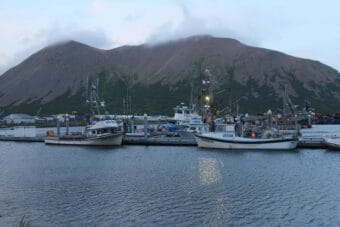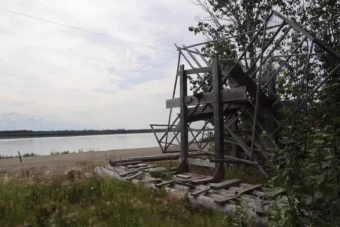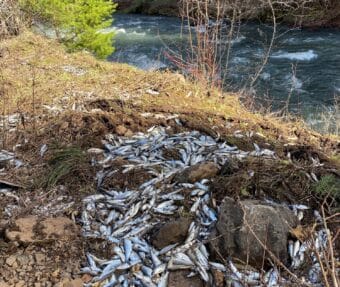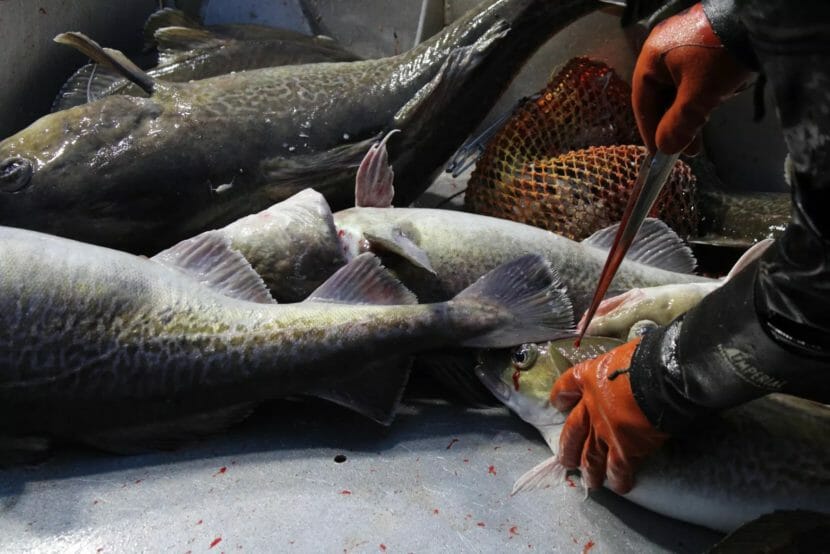
What was once the bread and butter for many Bering Sea and Aleutian Islands fishermen now rests like a distant memory among Alaska’s commercial fishing industry.
The Bristol Bay red king crab fishery has been closed for two years, and along with it, Bering Sea snow crab have abruptly disappeared, causing another complete closure.
Together, the fisheries generally bring in millions of dollars to the fleet and the coastal Alaska communities that rely on them. Since 2021, when king crab closed and snow crab saw a huge decline in harvest numbers, fishermen have taken an estimated $287.7 million hit.
Without those fisheries and without that revenue, more and more boats are relying on other work like fishing for cod and small amounts of bairdi crab or summer tendering gigs just to make ends meet.
So when a group of Bering Sea fishermen recently heard they’d be getting paid less than they hoped for cod this winter season, they figured they couldn’t afford to just sit by. But that’s exactly what they did. When the season opened, they didn’t go out to fish — and it worked.
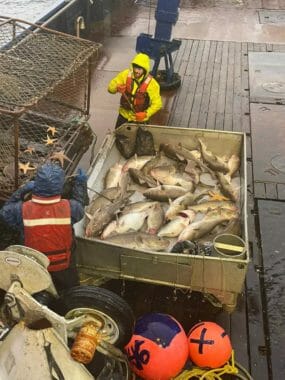
Rather than head out right away to the fishing grounds and set their gear like they usually do on the New Year, nearly 30 boats dropped their anchors or docked up in port, waiting on better news.
“Trident posted a substantially low price for cod this season, but no other processors would post anything,” said Chris Studeman, captain and co-owner of the 104-foot fishing vessel Kevleen K. “And they all expected us to just go fishing with the good faith that they’ll make it right in the end. And you can’t really run an operation with the hope that somebody will make it right in the end.”
Studeman got on his phone and struck up a conversation with other fishermen in the cod fleet. Ultimately, about 26 boats joined Studeman and his crew in the informal strike. There’s likely somewhere around 40 to 50 boats total that are fishing federal cod this season. That includes both the above and below 60-foot sectors.
Studeman said he didn’t go in planning anything specific, but just wanted to gather some fisherman and talk. However, they soon organized and decided they wanted a better idea of what most of the canneries would offer them for their catch before they started dropping their gear.
“We never really put a name or a label on it,” Studeman said. “We were just trying to make sure we got the price to come out before we all went fishing. 40 cents wasn’t going to work.”
40 cents a pound was what the fleet heard Trident would pay for cod, but hadn’t received word from most other processors on price. That’s not unusual, though. Fishermen often head out to catch cod before they know for sure how much they’ll be making per pound.
Studeman — who’s been fishing in the Aleutians for about two decades — said that’s just how it goes.
“The cannery has kind of always held all the power because they put out a price and everybody goes fishing, and the only way we can stop that is to get together as a group, as a whole,” he said.
This New Year, that worked. Studeman said he hopes both the small and larger sectors of the fleet can continue to work together to advocate for one another and work with the processors.
“Because we’re able to get the small boats and the big boats both to be on the same page, I hope in the future that we can get organized the first week of December and then be talking with the processors before we even attempt to come up,” he said. “And hopefully we can have a price that everybody can agree on before we even leave our homes.”
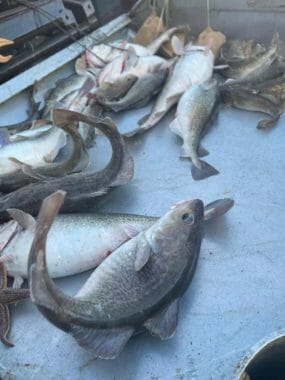
The boats stood down for about three days. By Jan. 4, they’d gotten word from most processors on prices.
Ultimately, Studeman said they posted a price of about 45 cents per pound across the board. That’s less than last year, but in the current climate and with increased costs for fuel, parts and labor, the five-cent jump up from the original 40 cents makes a difference.
“Pretty much all the crab fisheries that we’ve been fishing with this boat are gone,” he said. “We don’t have a lot left on the table. We got cod fish and some bairdi to go catch this year, and then salmon tendering… so everything’s pretty tight for all of us.”
A lot affects the price for cod, including changes at the processing level. And processors are also seeing increased operating costs. Tom Enlow, President and CEO of UniSea — a fish and crab processing plant in Unalaska — said the price for an entry-level processor has gone up 14% since last year.
“The market’s not the same as it was a year ago,” Enlow said. “So if we pay fishermen the price that we paid a year ago, we’re going to lose money.”
Still, Enlow said he understands where the harvesters are coming from. If he were in their Xtratuf boots, he said he’d probably do the same. And ultimately, he’s glad the company could come to an agreement with the fleet.
“It’s just a little bit of us revisiting our calculations and making sure that we can pay the harvesters with what they’d like to get paid, and still make money,” Enlow said.
UniSea is offering 46 cents per pound. And like most other processors, they also give volume incentives to their harvesters. So as the fishermen deliver more product, the price they get for that fish goes up.
As for harvest amounts, boats larger than 60 feet have 5,168 metric tons of cod to catch for the 2023 “A” season. The smaller boats have less than half that, with 2,413 metric tons. That doesn’t include the reallocation the under-60 fleet will get from the jig gear sector.
Those harvest numbers have been on a downward trend for the past several years.

